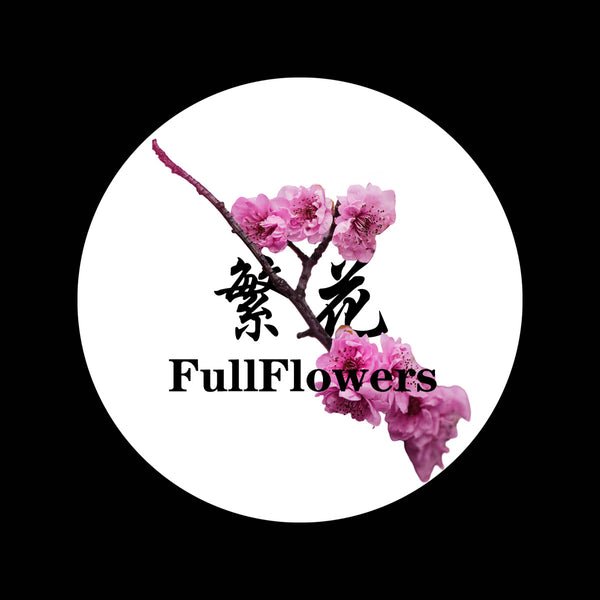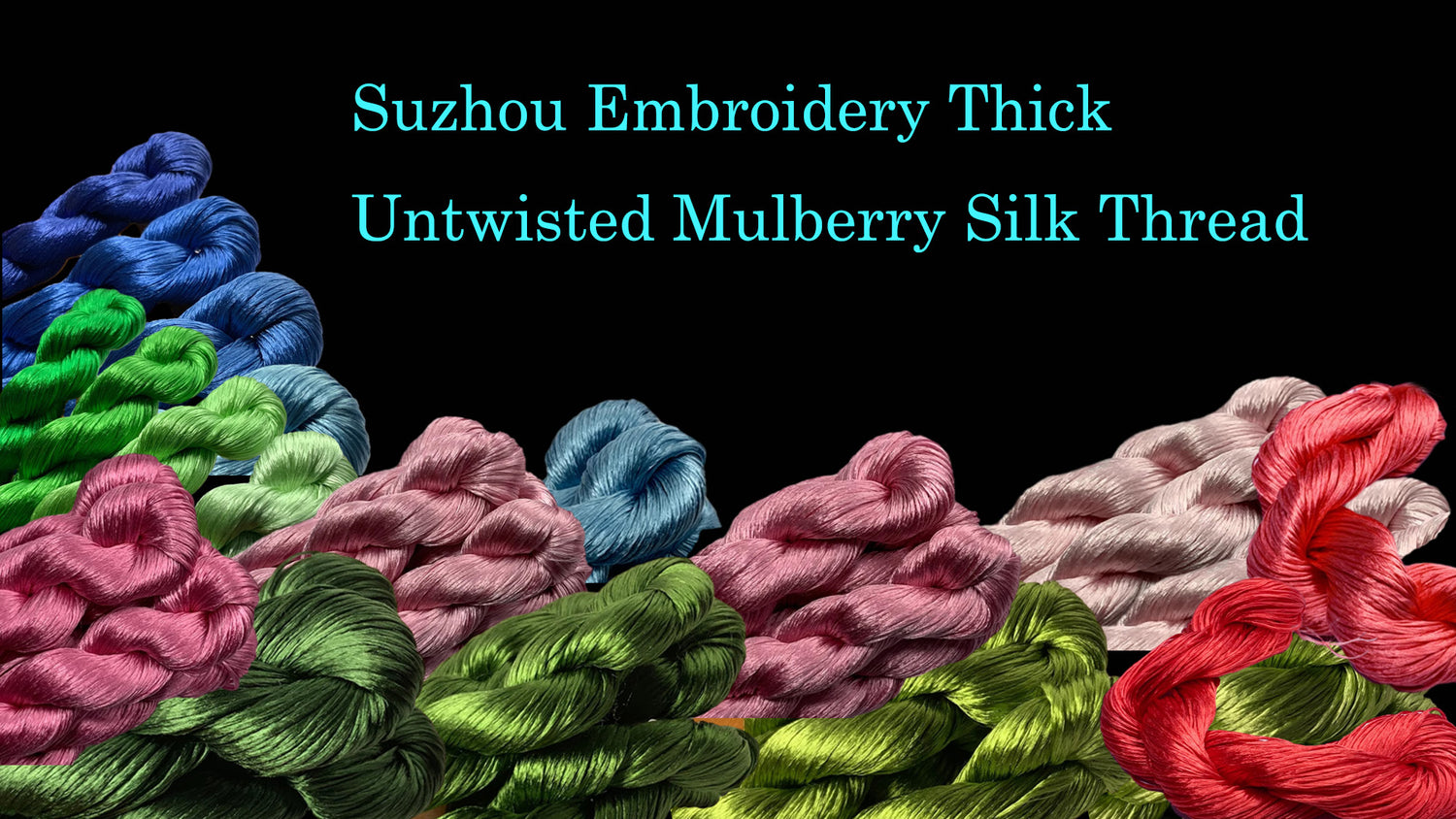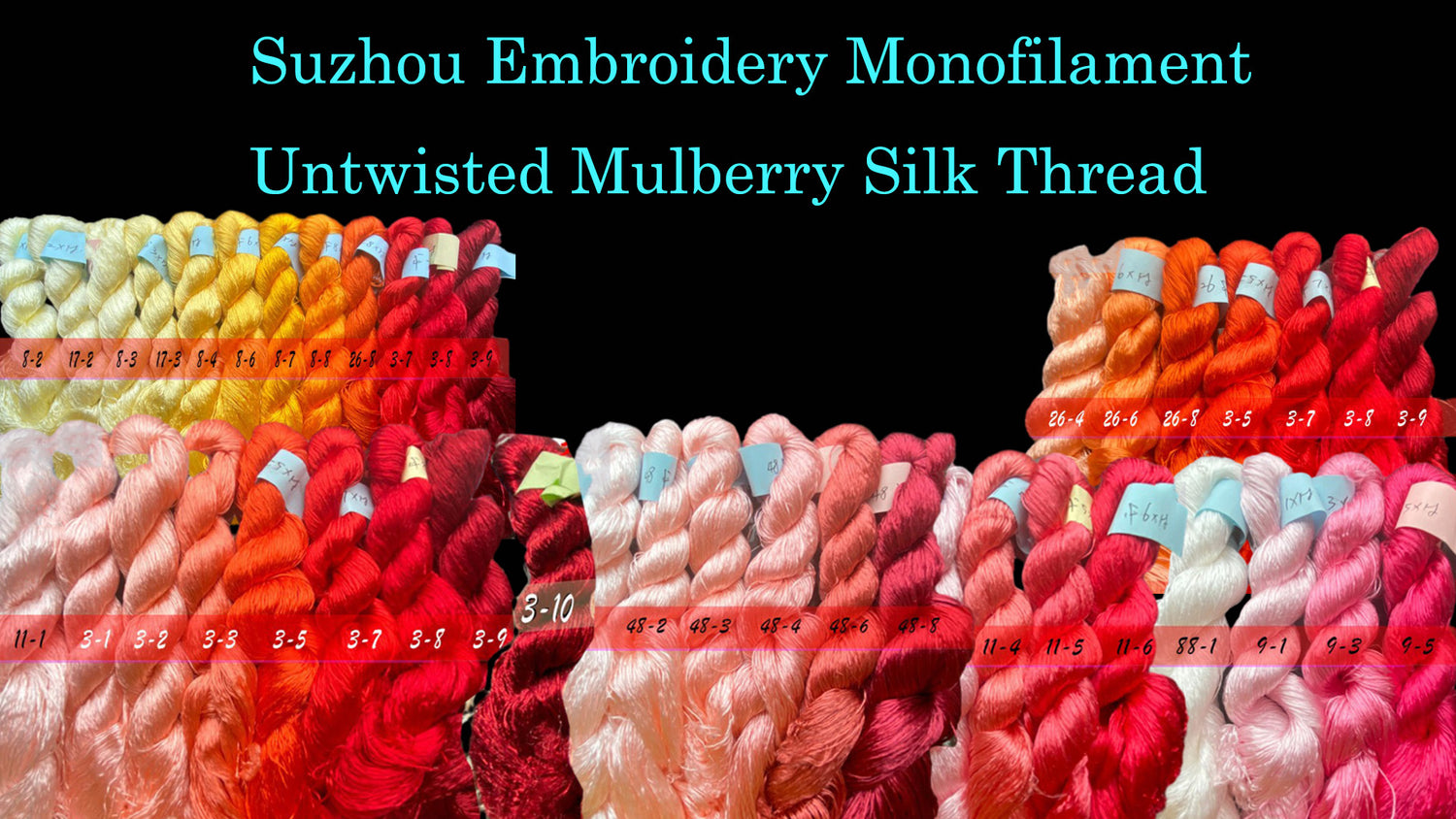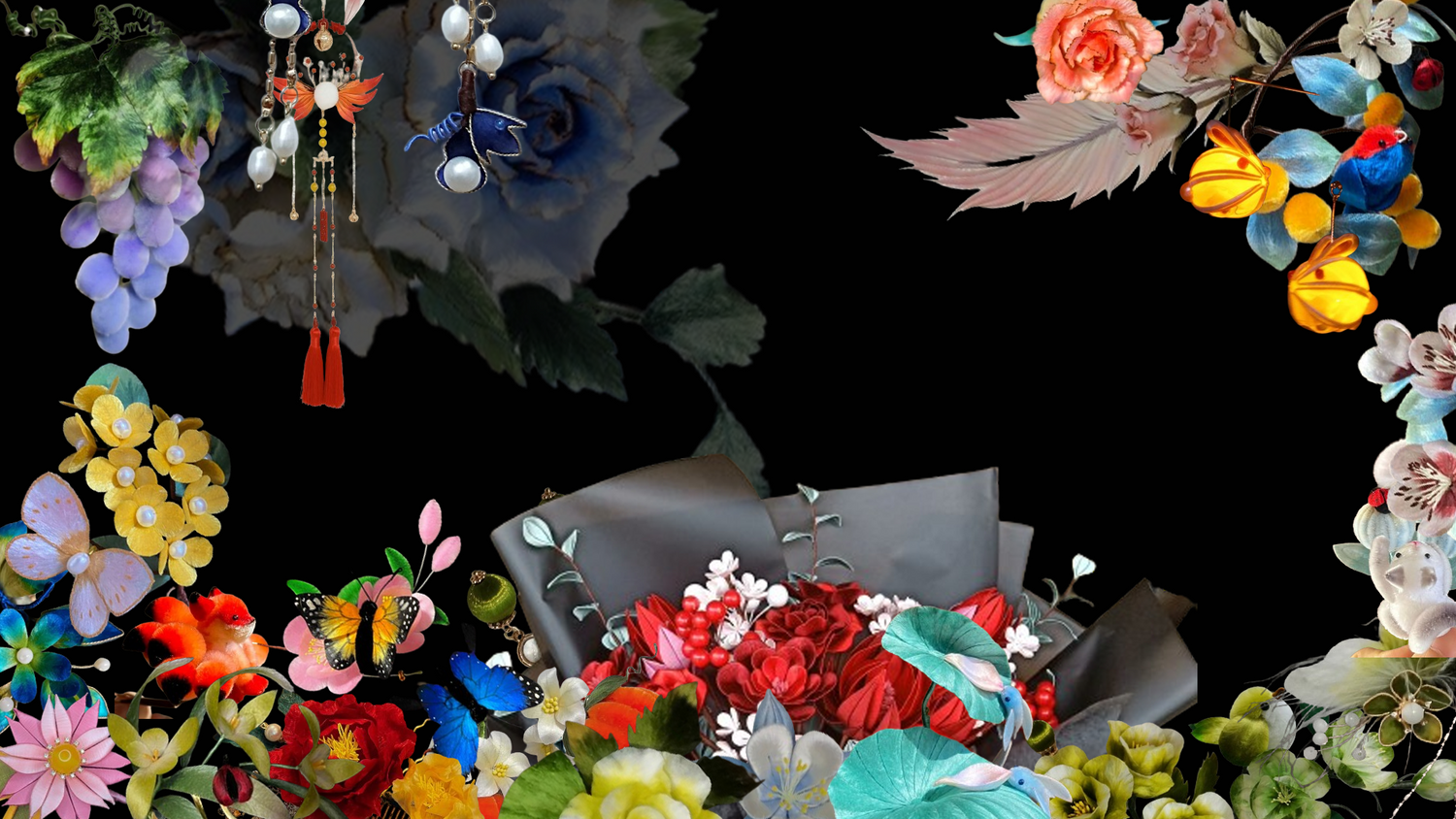
How to Make Curled Petal Chrysanthemum Hairpin - Handcraft Ronghua Tutorial
Share
The curled petal chrysanthemum is a common type of chrysanthemum, characterized by its long, curled petals and unique, beautiful shape. It is a popular element in handmade crafts. In this case study, the "curled petal chrysanthemum" is used as a design element for Ronghua jewelry to create a unique hairpin.
 Main Color Scheme Display
Main Color Scheme Display
A. Preparing Velvet Strips
 1
1
1. Prepare the velvet rows needed for making leaves, butterflies, small flowers, and chrysanthemums. In the image above, (1) is for the leaves, which use variegated thread, so the colors of the velvet strips vary along the row; (2) is for the butterfly; (3) is for the small flowers; and (4) is for the chrysanthemum.
 2
2
2. Cut the velvet strips. The width for the leaf strips is about 1.5 cm, for the butterfly about 2 cm, for the small flowers 1-1.1 cm, and for the chrysanthemum about 0.9 cm.
B. Trimming and Shaping
 3
3
3. For the leaves, only trim the bottom end of the velvet strip. For the butterfly, cut the strips into the shape of butterfly wings; at this stage, you can choose to trim or not trim. For the small flowers, trim both ends of the strips, then bend and twist the wire. For the chrysanthemum, cut the strips to varying lengths for a more natural look. Note that since the solid color segment at the bottom of these strips is quite long, you can flatten the strip directly into a semi-finished product without trimming, saving time. After trimming all the strips, flatten them with a clamp, apply setting liquid, and let them dry for later use.
C. Assembling and Further Shaping
 Shaping and Assembling Small Flower Petals
Shaping and Assembling Small Flower Petals
4. After shaping the small flower petals, use a petal curling tool to shape the petals, then combine five petals with a cluster of gypsum stamens to form a small flower.
 Shaping and Assembling Leaves
Shaping and Assembling Leaves
5. Cut the leaf strips into a serrated shape, then use a clamp to create a curve. Assemble three and five leaf pieces into two branches, one large and one small.
 Shaping and Assembling Butterfly
Shaping and Assembling Butterfly
6. Cut out the wings according to the template, use gold ink to draw some patterns on the wings, and then assemble all the butterfly components.
 7
7
7. Choose a suitable curling tool size based on the chrysanthemum petal dimensions. Use the tool to curl the petals into three different arcs according to the desired petal curl from the center to the edge of the flower. For the center of the flower, the petals should be smaller and more curled (Petal 1). For the middle and edge, the petals should be longer and more open (Petal 2 and Petal 3). Only curl the upper part of Petal 2 and Petal 3.
D. Assembling the Chrysanthemum Flower
 8
8
8. Assemble the chrysanthemum. The more petals used, the fuller the chrysanthemum will be. This case uses over 50 petals. Start by assembling several Petal 1 pieces into a small bud. Add petals to the gaps between the petals to make the flower fuller. Continue adding Petal 2 and Petal 3 pieces to the gaps, arranging the petals in a staggered manner to avoid too many same-length petals in one spot.
 9
9
9. Prepare all the components: one blooming chrysanthemum, two small flowers, one butterfly, and two branches.
 10
10
10. Arrange the components according to the final design, determining their approximate positions. Secure each component with silk threads, adjusting their positions and angles as needed during the process. Finally, trim any excess wires and attach the flower branches to a hairpin base, completing the creation.








